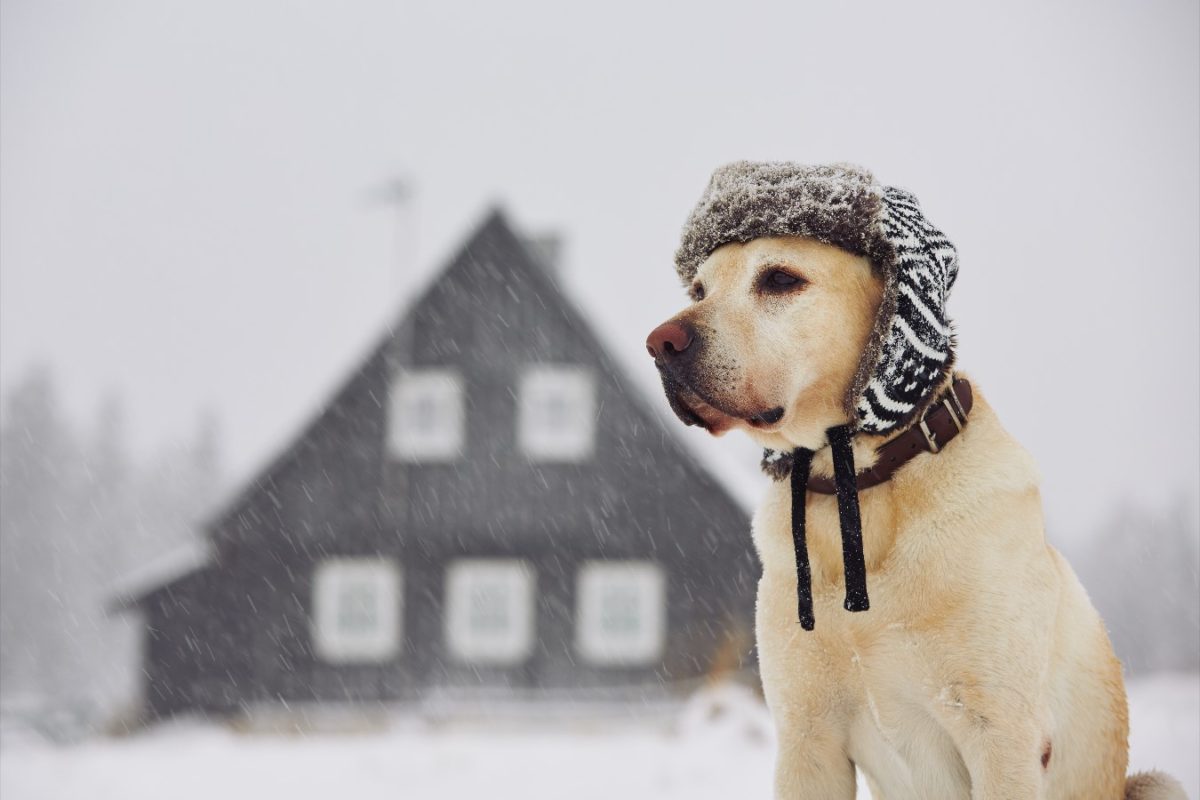Everything, Cats, Dogs, Pet Care
Protecting Your Pet from Winter Cold
Rain, wind, snow, and ice. Cold temperatures and the accompanying weather can cause discomfort to our pets as well as to us. It can also be life-threatening. Adjust to the elements with your pets, and they’ll be safer and healthier.
Pets and the outdoors
Most dogs and cats are more comfortable when they live indoors during colder months in particular. They should never be left outdoors in cold weather without access to indoor warmth. Cats and dogs with arthritis feel more pain in cold, damp weather, so they’ll want to be outdoors less. Very young, old, and ill animals also have less tolerance for cold.
Regular exercise is just as important in winter months. Without it, your pet may gain weight, become depressed, or develop behavior problems.
These steps help keep winter outdoors time safer and more comfortable for dogs and cats:
- Make sure your pet is wearing ID in case he or she gets lost.
- Keep your dog or cat on a leash on snow or ice, which make it harder to follow a scent and find one’s way home.
- Be careful around frozen ponds, streams, rivers, or lakes. The ice might not be uniformly thick enough to prevent your pet from falling through it.
- Get a dog sweater or jacket for short-haired dogs and small dog breeds to provide needed warmth when they’re outside.
- Keep snow from piling up against fences, which allows animals to jump over fences and away from the safe confines of your yard.
- Clean your dog’s or cat’s stomach and paws with a cloth and warm water to remove chemical debris after your pet has been outside. Be sure to clean between the toes. The chemicals used to keep roads and sidewalks clear of snow and ice are hazardous to animals. Pet booties are another way to protect your pet’s feet in the winter.
Dogs and dog houses
If your dog prefers to be outdoors, make sure that his dog house is adequately protected from cold, moisture, and drafts. The doorway should face away from the wind, and the enclosure should be leakproof and preferably insulated. A flap door allows the dog’s body warmth to warm up the dog house when he’s inside.
A raised floor with a thick bedding of straw or cedar shavings provides insulation against the cold earth. Some pet stores carry heated pet mats. Avoid heat lamps, which can cause fires.
Animals and cars
Cats and small wildlife like to sleep under the hoods of parked cars, where it’s warm. If you bang on the car hood or honk the horn a few seconds before starting your car in the winter, any sleeping animals will have a chance to exit their dangerous sleeping quarters.
Don’t leave your dog or cat in a parked car for any length of time in cold weather. Cold cars keep cold in, which can kill an animal.
Animals and antifreeze
Antifreeze is a danger to animals at any time of year. It’s highly toxic and often deadly if animals ingest it — as little as a teaspoon can kill. Unfortunately, its sweet taste appeals to animals. When you take your dog for a walk, don’t let him drink from any puddles that may have come from leaking cars.
A good precaution is to make your garage out of bounds to animals. Or, make your garage more animal-friendly by using antifreeze made with propylene glycol rather than the standard and more dangerous ethylene glycol. Propylene glycol is classified as safe enough for use in food, so it won’t harm pets or wildlife.
Food and water in the winter
Some animals prefer to spend a lot of time outdoors as long as they can come inside whenever they want. Keeping warm requires more energy, so these animals will need more food and water than animals that spend most of their time indoors.
If your dog or cat has a water dish outside, check it several times a day to make sure the water isn’t frozen. Avoid using a metal dish because tongues can freeze to metal when the temperature is below freezing. Where temperatures often drop below freezing, a heated water dish keeps ice from forming.
Pet grooming
Winter air can make skin dry and itchy, and matted hair provides less protection from the cold. Groom your cat or dog regularly to maintain good skin and hair health.
Signs of problems and what to do
- Frostbite Dogs’ and cats’ foot pads and the tips of their ears and tails are particularly vulnerable to frostbite. Frostbitten skin looks bright red at first and then pale. It feels cool to the touch. After frostbitten skin has thawed, it may look burned or black.
- Hypothermia Shivering and weakness may lead to hypothermia, which is the lowering of the body’s temperature. Frostbite may or may not be present. The animal will become lethargic, breathing will be slow and shallow, the pulse will slow down, the body will feel cold to the touch, and eventually the animal will lose consciousness.
- Antifreeze poisoning Symptoms include increased drinking and urination, vomiting, diarrhea, panting, lack of coordination, and convulsions.
Call your veterinarian immediately if your pet appears to have any of the above. If the animal has hypothermia, wrap him in a warm blanket or towel on the way to the veterinary clinic.
Our pets depend on us for safety and health. When we take the necessary precautions and act at the first sign of a problem, they can enjoy winter with us.


